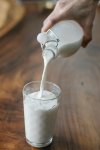Knowledge Center

Improving raw milk quality is crucial for herd health, profitability, and producing high-quality dairy products. Quality is typically measured by metrics like Somatic Cell Count (SCC) and Standard Plate Count (SPC) (or Total Bacteria Count). Focusing on hygiene, cooling, and cow health provides the strongest foundation for success.
7 Oct 2025

The global dairy industry faces a dual challenge: meeting the growing demand for nutritious products while drastically cutting its environmental footprint. Dairy farms are significant contributors to greenhouse gas (GHG) emissions, primarily in the form of methane (CH4) from the cows' digestive process and nitrous oxide (N2O) from manure and fertilizer use.
For the dairy sector to secure a truly sustainable future, these emissions aren't just an environmental issue—they are an economic and reputational imperative. The good news is that practical, innovative solutions are rapidly emerging, turning farms into climate champions.
7 Oct 2025

Fact vs. Fiction: Debunking the Dangerous Myth That Cow's Milk is a Health Hazard
It’s an old marketing slogan: "Milk does a body good." But in the age of viral misinformation, that message has been drowned out by a persistent, aggressive strain of fake news claiming that cow's milk is fundamentally "dangerous" for human health.
This narrative, often driven by fear-mongering and cherry-picked studies, casts milk as a toxic brew of hormones, saturated fat, and inflammatory agents. While personal dietary choices are absolutely valid, it's crucial to separate these alarmist claims from objective, established nutritional science. The truth is, for the vast majority of people, pasteurized cow's milk is a safe, nutrient-dense food—not a public health threat.
7 Oct 2025